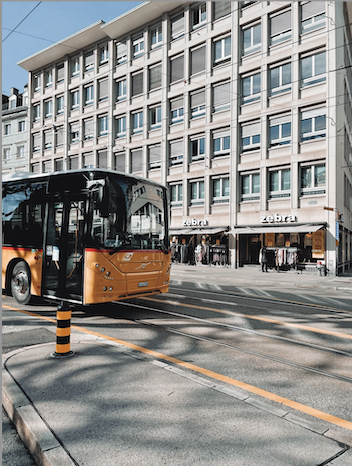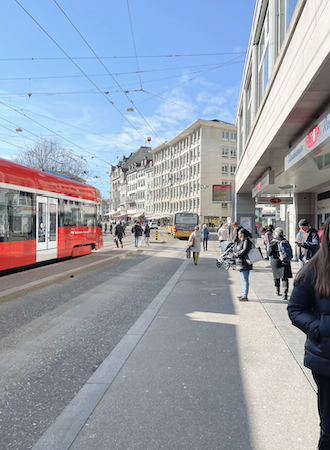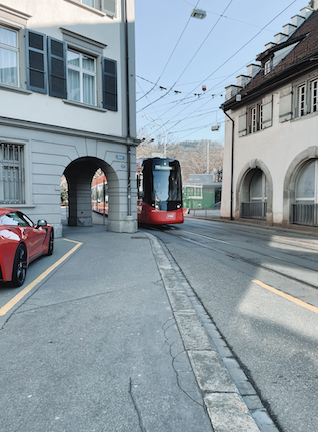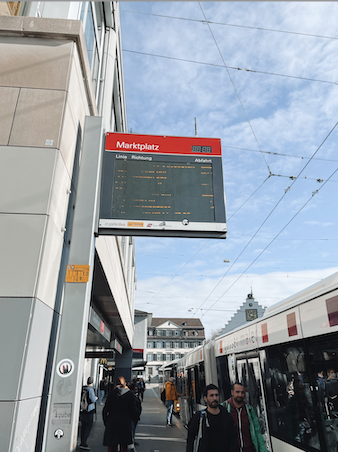Navigating Swiss Public Transportation
 Switzerland is known for being one of the most efficient, clean, precise countries in the world, and in alignment with this, their public transportation system is incredible. While it is quite impressive, as a foreigner it is incredibly hard to navigate at first attempt. There are various types of public transportation in Switzerland, including buses, trains, boats, cable cars, trams, and taxis. Depending on needs and distance, a different mode of transport may be most suitable.
Switzerland is known for being one of the most efficient, clean, precise countries in the world, and in alignment with this, their public transportation system is incredible. While it is quite impressive, as a foreigner it is incredibly hard to navigate at first attempt. There are various types of public transportation in Switzerland, including buses, trains, boats, cable cars, trams, and taxis. Depending on needs and distance, a different mode of transport may be most suitable.
Types of Public Transportation
Trains: Trains are common across all of Europe, and are used frequently within Switzerland mainly for travel between major cities. From Zurich, the main mode of transport to get anywhere in Switzerland is the train. It is the most efficient, although certainly not the cheapest. For weekend trips, these trains are your best bet for getting across the country, where everything is accessible by about a 2 hour (high-speed or direct) train. High speed trains have limited stops, and go directly from main cities at a high speed. Normal trains also travel quickly, however take various stops along the way. For example, in the 50 minute train ride from Zurich to St. Gallen, the train took one stop in Winterthur. Trains here are also commonly used for commuters, for those who live in outside towns and have to commute into more major cities like Zurich or Geneva. One important thing to note is that the trains wait for no one! They are very prompt, as is the Swiss way. 
Buses: Busses are the most used mode of transportation from a day-to-day standpoint. Within cities, there are bus stops about every .2 miles. In St. Gallen, there is one just around the corner of about everywhere, and my apartment is about 800 feet from the nearest bus stop, which is incredibly convenient. The buses arrive every 6 minutes in the center of town, and about every 12 further out. Every time I get on the bus, there are at least 10 people on it, possibly more. The distance between places in St. Gallen is not far, but would be a long walk without the bus system, and there is hardly any parking in the city, so driving isn’t a viable option here. The bus is a great option for short and longer distances, although for longer distances it does take longer to travel by bus rather than by train. On the contrary, it is much cheaper than traveling by train. To get to a major shopping center from where I live in St. Gallen for example, it is a 35 minute bus ride compared to a 25 minute train. The bus ride is a fraction of the cost.
Taxi: Taxis are a very convenient means of transportation when you have significant luggage or have to travel at odd hours when the trains and buses might not be running, however are incredibly expensive. When I moved all my bags into my apartment, I needed to take a taxi because I couldn’t walk or take a bus with the amount of items I had to manage. It is also convenient because you can just give the local taxi company a call (posted in the city center), and a taxi will be at your doorstep within minutes!
 Pricing
Pricing
Trains: For train rides of around an hour, the cost is 30 CHF. For longer distances, the prices can get into the 60s and 70s for a one-way trip. There are however packages to be able to get a discount on transportation, such as the half-fare card, which gives you half pricing on ALL transportation, or the monthly and annual passes, which start at 290 CHF/month.
Buses: The buses are much more reasonable, and a single ticket within the city costs 2.40 CHF, and a day pass is 6.40 CHF. For a monthly pass, it costs 70 CHF to get around a particular city.
Taxis: Taxis come at a fee of 5 CHF base price and an additional 4 CHF for each kilometer. For my 6 minute drive to pick up keys, it cost me 16 CHF, and for the 10 minute drive from there to my apartment, it cost 30 CHF. That’s over $50 for 16 minutes of travel! Maybe the pain of dragging my luggage around would have been worth it;)
Getting Around
 Actually being able to tell apart the transportation is where it gets difficult. The biggest challenge for me was the trains. The tickets you buy don’t tell you what train or platform you’re taking. Instead, when you get to the station, you have to go to one of the digital signs where the trains are listed with their respective times, numbers, and platform assignments. Sometimes, you have a short connection between trains, so it’s important to locate these boards to figure out where to go in a hurry. The main number tells you the platform the train will be on. There can be up to 30 platforms in one train station. The lettering tells you what train, which you will be able to confirm when the train pulls up. Lastly, you need to make sure to board the train in the proper section, such as first or second class. The signs along the platform tell you what area to board on.
Actually being able to tell apart the transportation is where it gets difficult. The biggest challenge for me was the trains. The tickets you buy don’t tell you what train or platform you’re taking. Instead, when you get to the station, you have to go to one of the digital signs where the trains are listed with their respective times, numbers, and platform assignments. Sometimes, you have a short connection between trains, so it’s important to locate these boards to figure out where to go in a hurry. The main number tells you the platform the train will be on. There can be up to 30 platforms in one train station. The lettering tells you what train, which you will be able to confirm when the train pulls up. Lastly, you need to make sure to board the train in the proper section, such as first or second class. The signs along the platform tell you what area to board on.
Buses are much easier to understand. If you’re at a bus stop, there is an app that will tell you exactly what busses will be arriving in the next few minutes. When you plug in the destination into maps, it will tell you what bus to take. From there, you just have to wait for the right bus to pull up, which can be confirmed by the number displayed on the front and sides of the bus.
Transportation in Switzerland is amazing! Just remember: don’t be late.
Bis zum nächsten mal!
Kara
